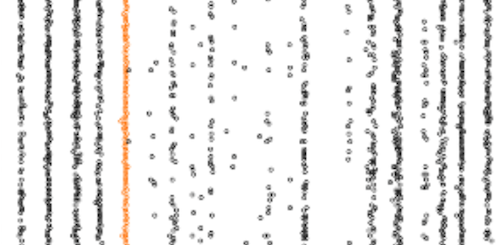Brain Response Relies on Avalanches
According to the “critical brain hypothesis,” the human brain responds appropriately to external stimuli by operating near a critical state between ordered and disordered dynamical regimes. An appropriate response has two main requirements: sensitivity, meaning that small input perturbations result in large response fluctuations, and reliability, or the ability to respond consistently to the same input. However, minimal models that maximize sensitivity at criticality often display low reliability. Now Zhuda Yang at Hong Kong Baptist University and collaborators have proposed a biologically plausible neuronal network that can satisfy the two requirements [1].
The model is based on a typical circuit of interacting neurons, in which the inhibitory and excitatory currents that a single neuron receives are balanced. To investigate how the model might be able to maximize both sensitivity and reliability near the critical state, the scientists trained it to perform a classification task: distinguishing between a target and a nontarget input signal. They observed a high correlation between the correct identification of the target signal and the occurrence of avalanches, which are bursts of concerted activity in neurons. A deeper analysis of the balanced network revealed that only a few active neurons are responsible for avalanches, suggesting that the network’s high reliability originates from localized activity at its nodes.
Because avalanches are a signature of criticality, they are considered to be evidence for the critical brain hypothesis. However, Yang and collaborators propose that they actually also contribute to response reliability. This finding reconciles a long-standing inconsistency in the critical brain hypothesis and could potentially be applied to other systems operating in the same dynamical regimes.
–Agnese Curatolo
Agnese Curatolo is an Associate Editor at Physical Review Letters.
References
- Z. Yang et al., “Critical avalanches in excitation-inhibition balanced networks reconcile response reliability with sensitivity for optimal neural representation,” Phys. Rev. Lett. 134, 028401 (2025).




